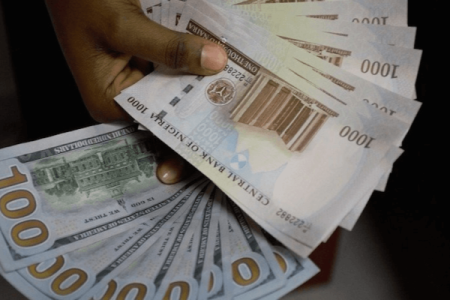
The Nigerian Naira depreciated by over 40% in early 2024, despite policy reforms and increased external reserves, reaching N1505.30 per dollar. The currency's instability continues to challenge the economy.
In the first half of 2024, the Nigerian Naira experienced a depreciation of over 40 percent in the foreign exchange market. Data from FMDQ revealed that the Naira weakened to N1505.30 per dollar on Friday, a significant drop from the N896.6 and N907.11 range it held at the close of 2023. This period has marked significant instability for the Naira against other major currencies, following a brief period of appreciation that ended in mid-April 2024.
In February 2024, the Naira reached its highest point at N1,665.50 before plummeting to its lowest point in April, when it stood at N1,140 and N1,230.61 at the official and parallel foreign exchange markets, respectively. This depreciation has been influenced by various policies from the Central Bank of Nigeria (CBN). These include the unification of the FX market, new regulations on the operations of International Money Transfer Operators, interventions aimed at Bureau De Change operators, excess FX regulations for banks, and the recent withdrawal of the Price Verification System Portal for importers.
Despite these policy reforms, the Naira has continued to fluctuate. In April 2024, Bloomberg recognized the Naira as the best-performing currency, but it quickly became the worst-performing by May. As of Friday, the Naira closed at N1505.30 at the official market and N1515 at the parallel market.
This depreciation has occurred despite an increase in Nigeria's external reserves, which stood at $34.07 billion as of June 26, 2024. The continuous decline of the Naira highlights the challenges faced by the Nigerian economy and the limited impact of current monetary policies






![Today's Naira Rate[01-07-2014]: Nigerian Naira Ends 5-Day Depreciation, Hits N1,510/$ in Market Rebound](/data/attachments/205/205685-147ab142f8cf48479284e57b3d23fc38.jpg)